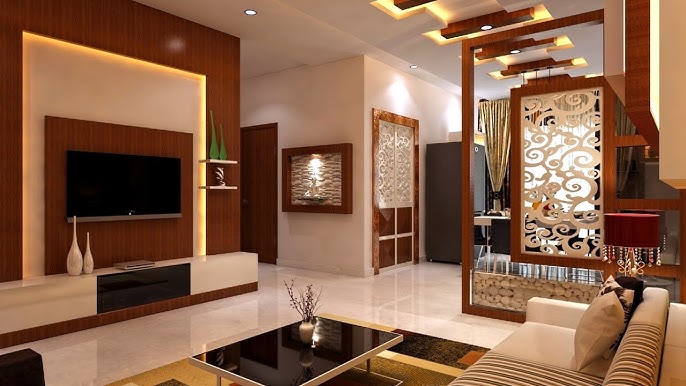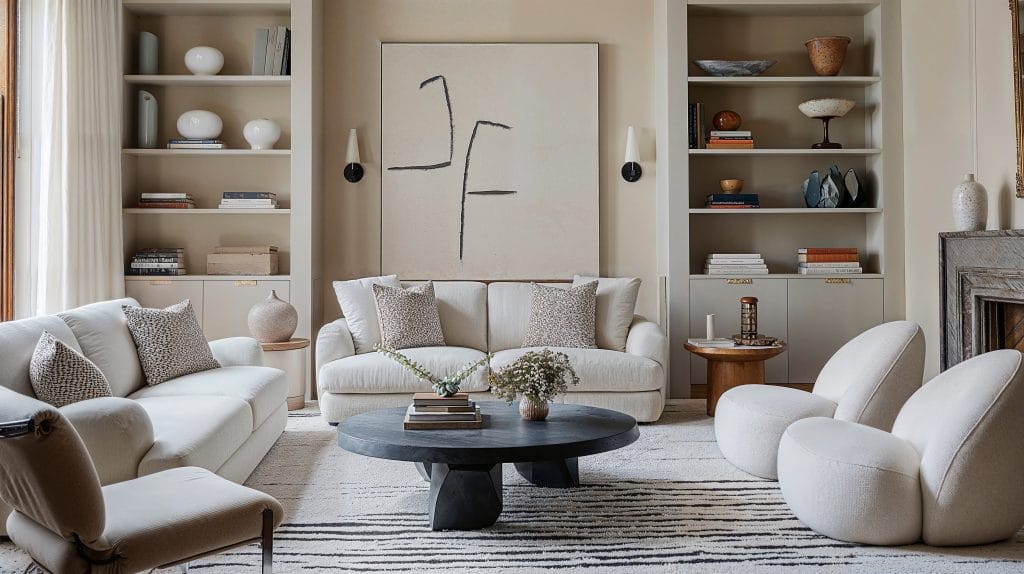Design a stunning look with expert luxury interior design.
Design a stunning look with expert luxury interior design.
Blog Article
Change Your Home With Vital Concepts of Interior Decoration and Visual Appeals
The art of transforming your home with the necessary principles of interior decoration and appearance calls for a thoughtful approach that harmonizes color, equilibrium, and spatial understanding. By recognizing the influence of shade concept and the relevance of structure and patterns, one can develop areas that are not just visually attractive however additionally deeply personal. Achieving this equilibrium entails even more than plain design; it incorporates a strategic setup and an eager understanding of exactly how each aspect communicates within a room. As we discover these fundamental ideas, think about how they might redefine your understanding of home and personal expression.
Recognizing Color Theory
Comprehending the principles of shade concept allows designers to develop spaces that resonate emotionally with owners while fulfilling practical needs. Each category plays a vital duty in establishing harmony within an area.
The psychological impact of colors is extensive; cozy hues such as reds and oranges evoke energy and heat, while cool tones like blues and eco-friendlies advertise peace and peace. Moreover, the use of complementary shades enhances aesthetic passion, creating striking contrasts that can elevate a space's charm.
Neutral colors, on the various other hand, act as a functional background, permitting various other layout elements to beam. It is necessary to take into consideration factors such as illumination and the area's purpose when picking a shade scheme, as these can change the understanding of colors throughout the day.
Eventually, a well-considered color design can transform an area, cultivating a feeling of convenience and style that aligns with the occupants' preferences. Proficiency of shade concept is, consequently, an essential ability for any type of interior developer intending to develop unified and inviting environments.
Attaining Equilibrium in Layout
Just how can developers accomplish a sense of stability in their rooms? Achieving balance in layout is basic to producing harmonious insides. Developers can utilize three key kinds of balance: balanced, unbalanced, and radial. Symmetrical balance includes setting up aspects evenly around a main point, fostering a sense of order and peace. This kind typically features sets of furniture or artwork, enhancing aesthetic stability.
Asymmetrical balance, on the various other hand, counts on varying elements that still achieve a natural look. This strategy permits even more dynamic and casual setups, offering passion while preserving stability. By meticulously selecting varying dimensions, shades, and textures, designers can create an aesthetically engaging space that really feels well balanced yet energetic.
Radial balance stresses a central focal factor with aspects emitting outside. This design is generally seen in circular designs, where furnishings and decor produce a natural border that draws the eye inward.
Ultimately, accomplishing equilibrium calls for thoughtful factor to consider of scale, proportion, and the partnerships in between components. miami luxury interior design. By masterfully applying these balance informative post principles, designers can transform areas right into settings that really feel both aesthetically pleasing and functionally harmonious, improving the general experience for passengers
Relevance of Spatial Awareness

An eager sense of spatial understanding allows designers to determine centerpieces within an area, guiding the audience's interest to crucial attributes while maintaining an overall sense of unity. It additionally aids in the tactical placement of lights, which can substantially influence the perception of space and mood. Understanding spatial relationships enables the developer to provide to the details needs of inhabitants, making certain that each location serves its designated objective without jeopardizing looks.
Eventually, spatial understanding is important for maximizing the possibility of any kind of indoor area. By thoroughly considering the interaction between measurements, design, and function, developers can produce environments that not just satisfy useful requirements however additionally stimulate a sense of convenience and appeal, enhancing the total living experience.
Incorporating Structure and Patterns
Embracing a varied series of appearances and patterns can substantially enhance the visual and tactile charm of an indoor area. The strategic use different materials-- such as timber, steel, material, and stone-- creates deepness and passion, making a room feel more inviting and vibrant. Combining smooth surface areas with harsh textures can develop an equilibrium that draws the eye and involves the detects.
When including patterns, take into consideration both scale and repeating. Big patterns can work as centerpieces, while smaller sized, refined styles can complement other elements without overwhelming the room. Layering patterns, such as pairing flower paddings with striped throws, adds intricacy and a feeling of harmony if performed thoughtfully.
It is likewise important to preserve a cohesive color combination, making certain that appearances and patterns function with each other instead than complete for interest. By choosing a couple of essential structures and patterns, you can produce a combined aesthetic that reflects your individual design while improving the general atmosphere of the room. Ultimately, the careful unification of these components can change an ordinary area into a sophisticated setting abundant with character and warmth.
Personalizing Your Room
Producing an area that reflects your individuality is crucial to accomplishing a truly welcoming atmosphere. Personalization in interior decoration enables you to instill your special style and rate of interests into your home, changing it from a mere site here sanctuary into a sanctuary that talks to who you are. Begin by selecting a shade palette that resonates with your feelings-- strong tones can invigorate, while soft tones use serenity.
Include artwork and design that mirror your enthusiasms, whether it be traveling, nature, or abstract ideas. Displaying individual collections, such as publications, photos, or mementos, can evoke treasured memories special info and create focal factors within a room. Furthermore, consider tailoring functional pieces, like upholstered furnishings, to line up with your visual preferences.

Verdict
To conclude, the makeover of a home through the necessary principles of interior decoration and aesthetics requires a detailed understanding of shade theory, balance, spatial understanding, structure, and customization. Each aspect adds substantially to developing a harmonious and functional living atmosphere - miami luxury interior design. By attentively incorporating these principles, individuals can boost the visual appeal and emotional resonance of their areas, eventually cultivating a home that mirrors special identities while providing comfort and practicality
Report this page